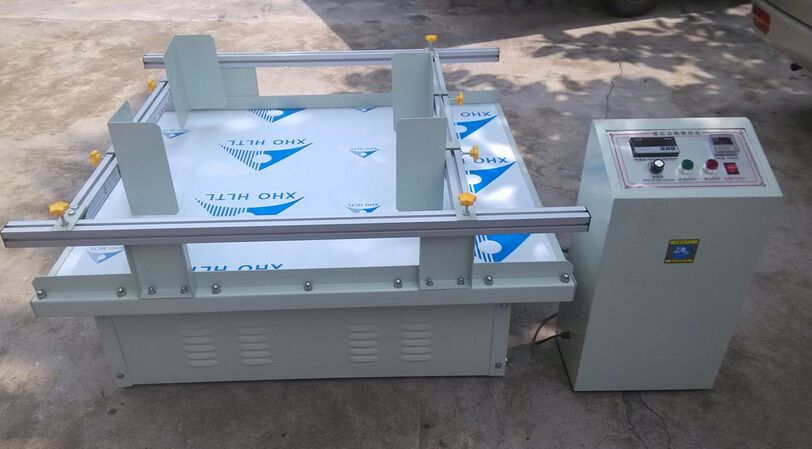ISTA 3J Combined Vibration and Drop Test for Parcels
The International Safe Transit Association (ISTA) 3J test method is designed to evaluate the performance of parcels under simulated transport conditions. This combined vibration and drop test ensures that packaging protects its contents during transit by subjecting it to realistic environmental stresses. The test is critical in the logistics, e-commerce, and manufacturing sectors where product integrity must be maintained throughout shipping.
The 3J test consists of two main components: a vibration phase followed by a drop impact. It simulates the complex environment that parcels face during transit, including handling by transport operators, loading/unloading processes, and the jolting experienced on various transportation modes such as trucks, ships, or airplanes.
The primary goal is to identify potential vulnerabilities in the packaging design that could lead to product damage. By understanding these weaknesses early in the development process, manufacturers can refine their designs and implement necessary improvements to ensure robust protection during shipment.
Compliance with this test standard is often a requirement for products intended for international trade or those sold by e-commerce giants. Failure to meet these standards could result in increased return rates, customer dissatisfaction, and potential legal issues.
The 3J test focuses on three key aspects: the vibration phase simulates the motion experienced during transport, while the drop phase replicates the impact that occurs when parcels are placed or fall from height. The combination of both phases provides a comprehensive assessment of the packaging's ability to withstand real-world conditions.
For quality managers and compliance officers, ensuring adherence to these standards is crucial for maintaining brand reputation and customer trust. R&D engineers must consider the 3J test when designing new products or improving existing ones. Procurement teams can leverage this information to select suppliers who meet stringent packaging specifications.
Why It Matters
The significance of the ISTA 3J combined vibration and drop test cannot be overstated in the context of modern supply chains. As global e-commerce continues to grow, so too does the demand for reliable delivery systems that ensure product integrity at every stage of transportation.
By conducting this rigorous test, manufacturers can preemptively address potential issues before products reach consumers. This proactive approach not only enhances customer satisfaction but also reduces costs associated with returns and replacements due to damaged goods.
The 3J test is particularly important for businesses operating across borders where different regulatory requirements may apply. Meeting these standards demonstrates a commitment to quality, which can open doors to new markets and partnerships.
Moreover, the use of such tests fosters innovation within the industry by encouraging continuous improvement in packaging technologies and materials. As environmental concerns become more prominent, there is an increasing trend towards sustainable packaging solutions that perform well under challenging transport conditions.
Scope and Methodology
| Parameter | Description |
|---|---|
| Vibration Phase Duration | The test typically lasts 12 minutes, during which the parcel is subjected to controlled vibration levels. |
| Vibration Frequency Range | The frequency range used varies depending on the type of transportation expected. For road transport, it usually ranges from 5 Hz to 30 Hz. |
| Drop Height and Angle | The parcel is subjected to a drop onto a concrete surface at an angle between 15° and 45°. |
| Impact Energy | This ranges from 20 Joules for small parcels up to 60 Joules for larger ones. |
| Environmental Conditions | The parcel is exposed to environmental factors such as temperature variations and humidity levels that mimic real-world conditions. |
This comprehensive approach ensures that the packaging undergoes stress conditions closely resembling those experienced during actual transportation. Compliance with these parameters guarantees that the tested parcels will meet or exceed international standards set by ISTA.
Industry Applications
| Industry | Description of Application |
|---|---|
| E-commerce | Ensuring parcels arrive undamaged to consumers, enhancing customer satisfaction and reducing returns. |
| Logistics | Improving the efficiency of supply chains by minimizing damage during transit, leading to cost savings. |
| Multinational Corporations | Meeting stringent international safety standards for export goods, ensuring compliance with regulations in different countries. |
| Manufacturing | Incorporating feedback from these tests into product design to enhance durability and protect intellectual property. |
| Sustainability Initiatives | Evaluating eco-friendly packaging solutions that are equally effective under challenging transport conditions. |
The ISTA 3J test is widely adopted across these sectors due to its ability to provide accurate insights into how parcels behave during transit. This information is invaluable for businesses aiming to optimize their operations and improve overall customer experience.





